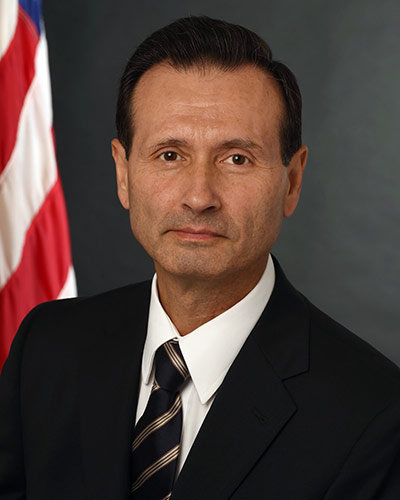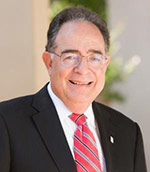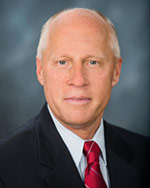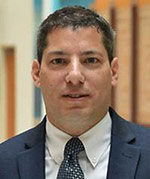July 18, 2019 | Joanne Morrison

Rural Residency Program Addresses Growing Shortage of Primary Care Providers in Maryland Communities
University of Maryland School of Medicine (UMSOM) Dean E. Albert Reece, MD, PhD, MBA, and David Stewart, MD, Associate Professor and Chair of the Department of Family and Community Medicine, jointly announced that Health Resources and Services Administration Administrator (HRSA), George Sigounas, MS, PhD, has awarded a $750,000 grant to establish a residency program in Maryland’s rural Eastern shore communities.
This grant is part of a larger $20 million multi-year initiative by HRSA to expand the physician workforce in rural areas by developing new, sustainable residency programs in family medicine, internal medicine, and psychiatry. The recipients of the awards include rural hospitals, community health centers, health centers operated by the Indian Health Service, Indian tribes or tribal organizations, and schools of medicine.
“The health challenges in rural America are clear: rural communities face a greater risk of poor health outcomes than their urban counterparts,” said Dr. Sigounas. “Programs like the Rural Residency Planning and Development grants take aim at one of the most persistent disparities: access to high quality healthcare providers. HRSA is committed to increasing the number of providers serving rural communities and improving health in rural America.”
Video:
The goal of the UMSOM program is to develop a sustainable, accredited rural training track in Caroline, Dorchester, Kent, Queen Anne’s and Talbot counties on Maryland’s Eastern Shore, and to ultimately expand the area’s rural primary care workforce.

A key aspect of the program involves strong partnerships with University of Maryland Shore Regional Health and the Choptank Community Health System. Residents in the rural track program will complete their first year of training in Baltimore and their final two years in medical practices and other clinical settings offered by these two health care organizations.

Addressing the needs of underserved communities in Maryland is a core goal of the University of Maryland, Baltimore.



Sara Rich, MPA, President and CEO of Choptank Community Health System, agreed that the HRSA-funded program is a critical step toward attracting primary care physicians to the most rural parts of the Eastern shore.
“Choptank Community Health is proud to be a partner in this groundbreaking grant award from the Health Resources and Services Administration. We commend the University of Maryland School of Medicine’s commitment to enhancing access to care for our communities through the development of a rural training track on the Eastern Shore,” said Ms. Rich. “We look forward to collaborating with our partners at UMSOM, UM Shore Regional Health and the Eastern Shore Area Health Education Center as we work together to bring more primary care physicians to our rural communities.”
About the Rural Residency Program

“Our goal is to achieve full accreditation and to recruit highly-qualified medical students with track records of interest and dedication to practicing primary care in rural Maryland,” said Dr. Ramirez.
.jpg)
“As a physician myself, I know it’s important to train physicians in rural areas because many physicians consider staying in practice in the communities where they trained. This HRSA grant will help our shortage of physicians on the Eastern Shore of Maryland,” said U.S. Representative Andy Harris (R-MD).
With assistance from the Eastern Shore Area Health Education Center (ESAHEC), the success of the program will be evaluated by tracking the number of family physicians retained in the five-county region, their practice locations, scope of practice and specific populations served.

About the University of Maryland School of Medicine
Now in its third century, the University of Maryland School of Medicine was chartered in 1807 as the first public medical school in the United States. It continues today as one of the fastest growing, top-tier biomedical research enterprises in the world -- with 43 academic departments, centers, institutes, and programs; and a faculty of more than 3,000 physicians, scientists, and allied health professionals, including members of the National Academy of Medicine and the National Academy of Sciences, and a distinguished recipient of the Albert E. Lasker Award in Medical Research. With an operating budget of more than $1 billion, the School of Medicine works closely in partnership with the University of Maryland Medical Center and Medical System to provide research-intensive, academic and clinically-based care for more than 1.2 million patients each year. The School has over 2,500 students, residents, and fellows, and more than $530 million in extramural funding, with most of its academic departments highly ranked among all medical schools in the nation in research funding. As one of the seven professional schools that make up the University of Maryland, Baltimore campus, the School of Medicine has a total workforce of nearly 7,000 individuals. The combined School and Medical System (“University of Maryland Medicine”) has an annual budget of nearly $6 billion and an economic impact more than $15 billion on the state and local community. The School of Medicine faculty, which ranks as the 8th highest among public medical schools in research productivity, is an innovator in translational medicine, with 600 active patents and 24 start-up companies. The School works locally, nationally, and globally, with research and treatment facilities in 36 countries around the world. Visit medschool.umaryland.edu/
About University of Maryland Shore Regional Health
As part of the University of Maryland Medical System (UMMS), University of Maryland Shore Regional Health is the principal provider of comprehensive health care services for more than 170,000 residents of Caroline, Dorchester, Kent, Queen Anne’s, and Talbot counties on Maryland’s Eastern Shore. UM Shore Regional Health’s team of more than 2,500 employees, medical staff, board members, and volunteers works with various community partners to fulfill the organization’s mission of Creating Healthier Communities Together. Visit umshoreregional.org
About Choptank Community Health System
Choptank Community Health System, Inc. (CCHS), a private, non-profit Community Health Center network, provides access to quality health care through the delivery of comprehensive medical, dental and behavioral health care services in Caroline, Dorchester, and Talbot Counties on Maryland’s Eastern Shore. CCHS has been providing quality health care in this rural area continuously for nearly 40 years. All CCHS offices and program sites are accredited by The Joint Commission. In 2018, CCHS provided care for over 28,000 patients in 6 health center locations and multiple school and community locations in our three-county region. The mission of CCHS is to provide access to exceptional, comprehensive and integrated health care for all. Visit choptankhealth.org
About the Health Resources and Services Administration
The Health Resources and Services Administration is the primary Federal agency within the U.S. Department of Health and Human Services responsible for improving access to health care for people who are geographically isolated and economically or medically vulnerable. As Administrator, Dr. Sigounas oversees the execution of HRSA’s $11.7 billion annual budget (FY 2019) that is used to expand access to quality health care through an array of grants to state and local governments, health care providers and health professions training programs.
Contact
Department of Anesthesiology
(410) 328-6120 (phone)
(410) 328-5531 (fax)
newsletter@som.umaryland.edu
Joanne Morrison
Director of Marketing and Public Relations
University of Maryland School of Medicine
jmorrison@som.umaryland.edu
Office: (410) 706-2884
Mobile: (202) 841-3369










